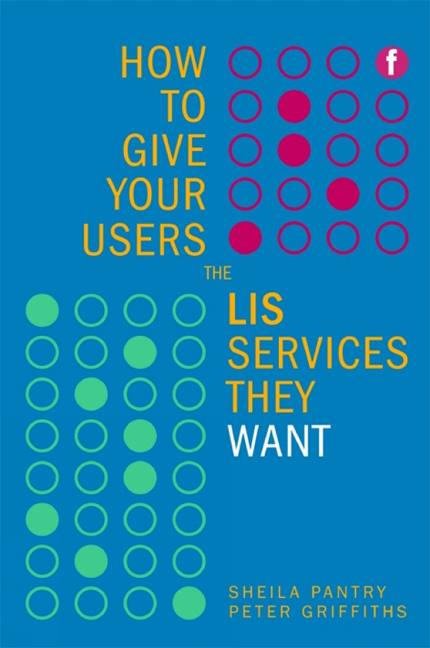Book contents
- Frontmatter
- Contents
- Preface
- 1 Why this book?
- 2 Understanding users – the what, why, where, when, how and who
- 3 What is the current knowledge about your users and their needs – is it really predictable?
- 4 Great expectations: how LIS professionals can manage and train users
- 5 Using information about past user behaviour
- 6 Making the most of knowing your users
- 7 Keeping track of changes in what users want
- 8 Tracking the future
- 9 Future perfect?
- Appendix 1 Reading list and references
- Appendix 2 Where to go for further information
- Index
8 - Tracking the future
Published online by Cambridge University Press: 08 June 2018
- Frontmatter
- Contents
- Preface
- 1 Why this book?
- 2 Understanding users – the what, why, where, when, how and who
- 3 What is the current knowledge about your users and their needs – is it really predictable?
- 4 Great expectations: how LIS professionals can manage and train users
- 5 Using information about past user behaviour
- 6 Making the most of knowing your users
- 7 Keeping track of changes in what users want
- 8 Tracking the future
- 9 Future perfect?
- Appendix 1 Reading list and references
- Appendix 2 Where to go for further information
- Index
Summary
In this chapter we look at some ways and methods of tracking the future, keeping ahead of the competition and anticipating your users’ needs, by:
➡ keeping a watch on the wider changing world
➡ thinking about your networks – what can they tell you?
— people
— management networks
— technical networks
➡ learning lessons
➡ changing customers’ requirements
➡ making friends – what the suppliers are offering – both electronic and print sources
➡ making use of new ways of working and partnerships.
Keeping a watch on the wider changing world
It is essential to keep a very watchful eye on the wider changing world. What often develops in a different sector, e.g. retail, may be taken as the norm and expected in the information sector. As we have already seen, knowing your users and helping them to define their needs is one of the main ingredients that will achieve success in keeping at least one step ahead of their information demands. This is especially important when creating electronic information services, since the ready availability of e-services may mean that your users keep their requirements to themselves under the impression that they can get everything from the web or from desktop information services.
One of the other main ingredients for success is knowing what your users are planning – how they are going to demand products and services in future. These will have such an impact on the services that you are currently offering that your own customers may decide to take up the competitors’ service. For example, if you are offering services to a specific group of users such as a research group and you wish to offer e-journals instead of paper-based services, you may find that the e-journal subscription agents decide to contact the research group directly. There is no real reason, if they receive a sufficiently cost-effective offer, why the research group should not take this offer up. They may feel that they would be in control of their own budget and of their choice of journals without having to deal with a third party – your information service.
- Type
- Chapter
- Information
- How to Give Your Users the LIS Services They Want , pp. 97 - 118Publisher: FacetPrint publication year: 2009



